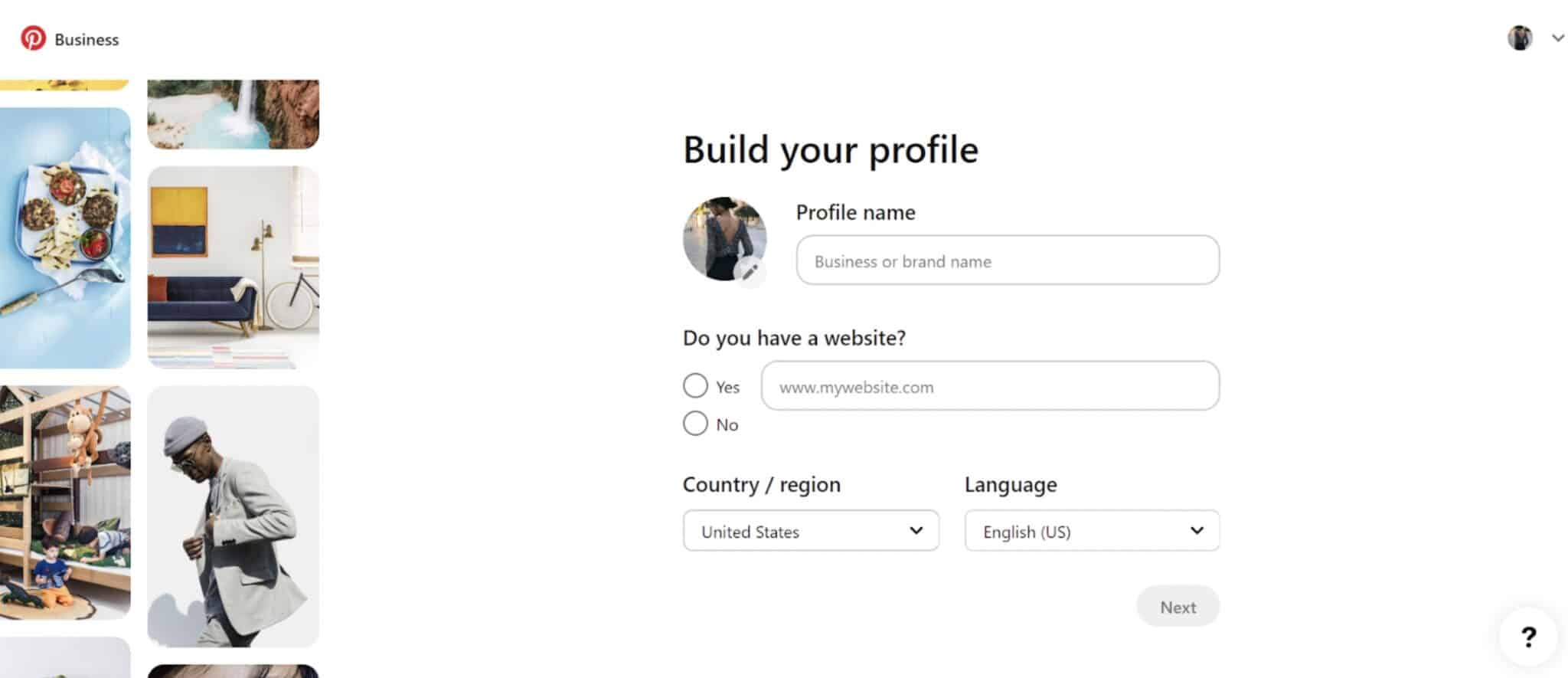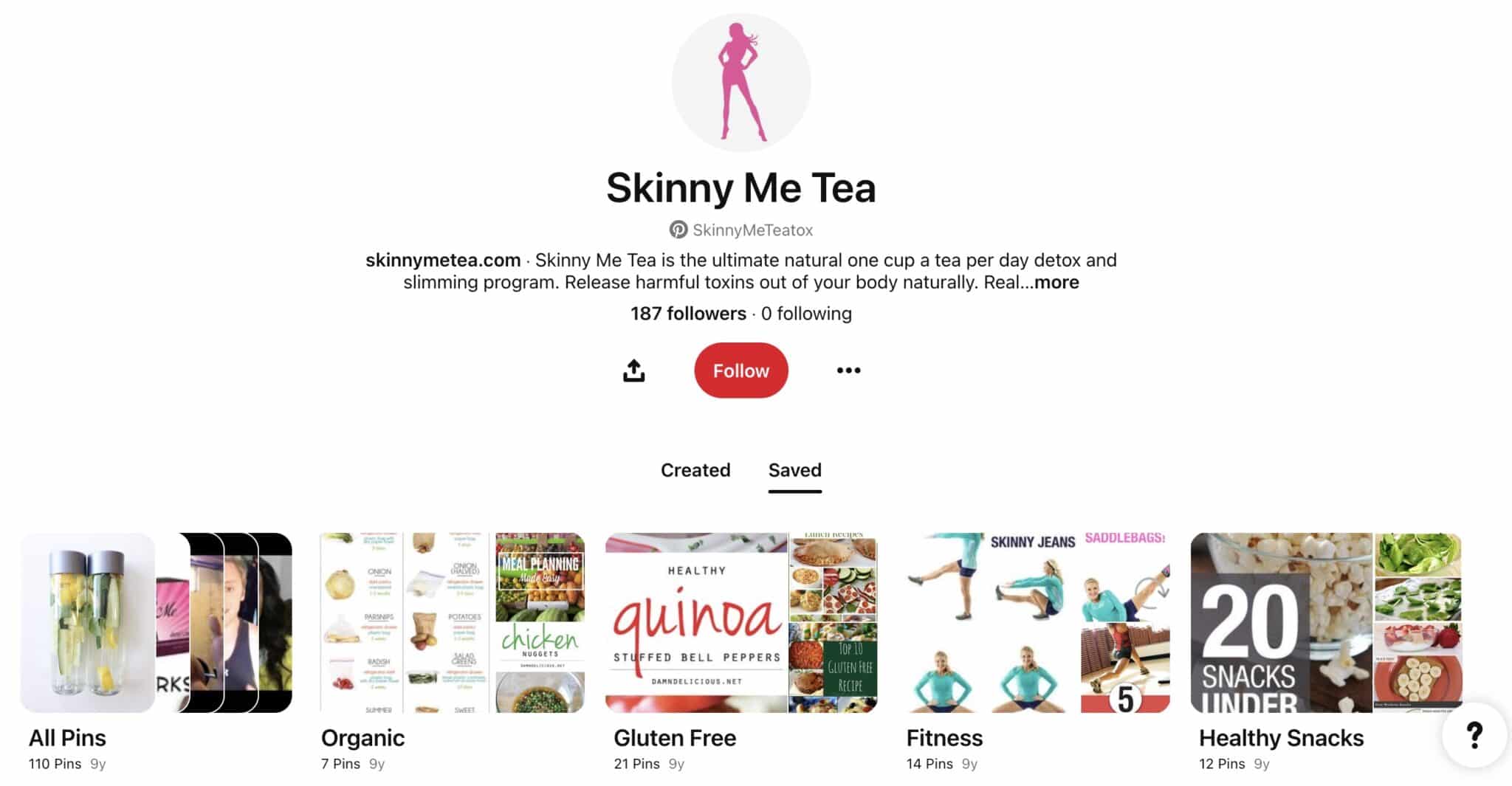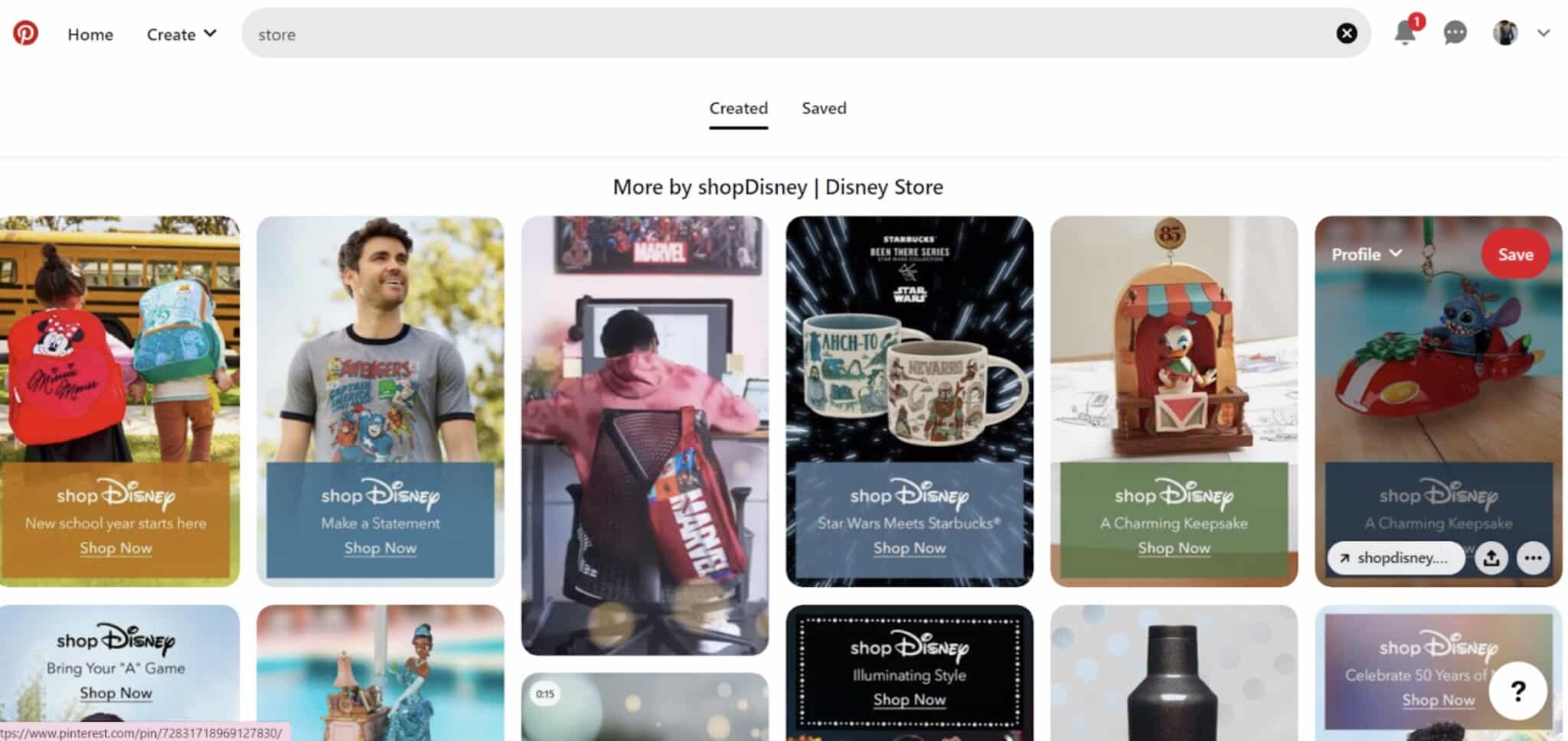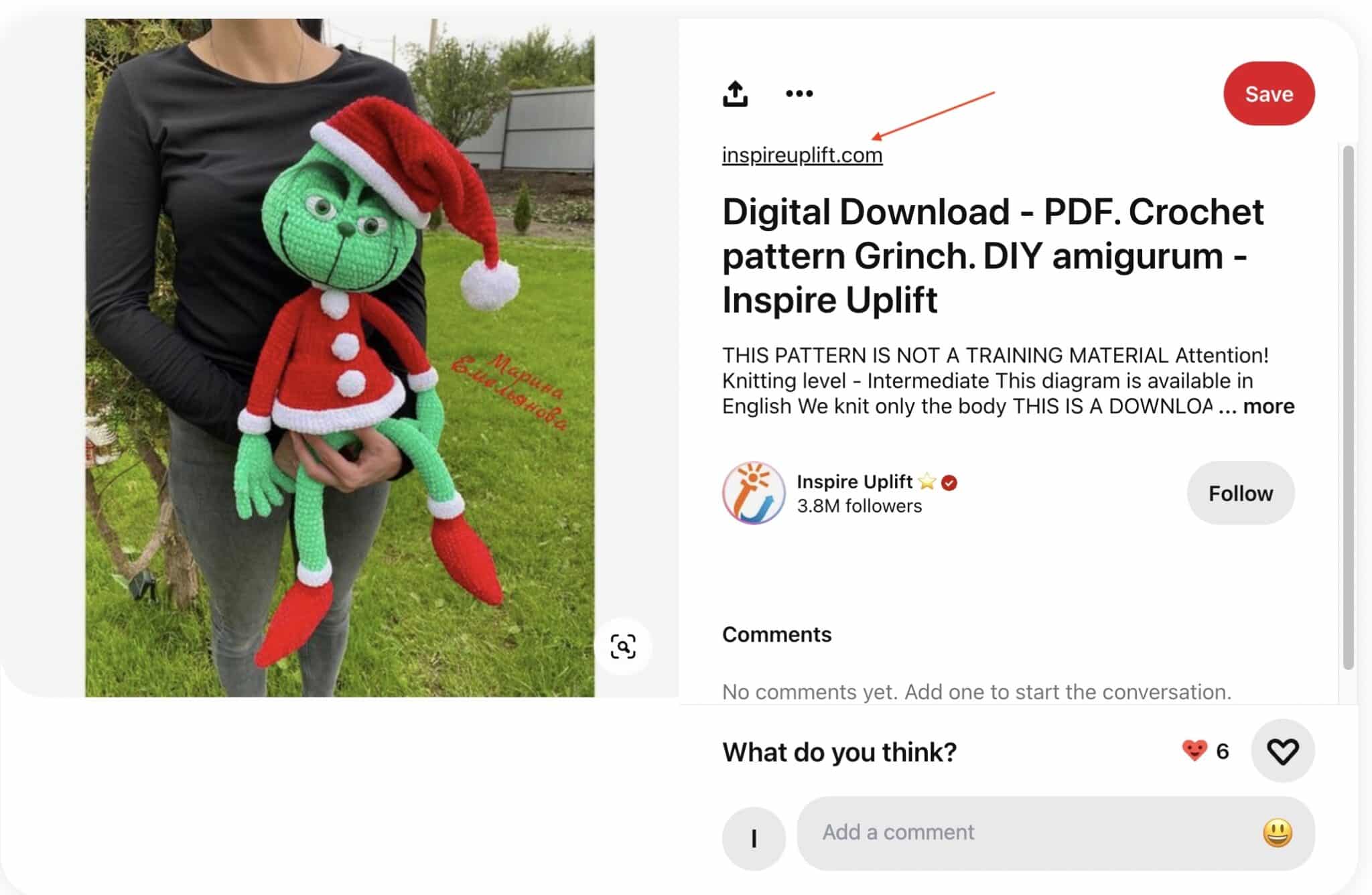Did you know Pinterest is the 14th largest social network globally, with 445 million monthly users? It’s a hot spot for potential customers, especially among women who make up over 60% of its users.
As a dropshipper, understanding Pinterest is key. It’s not just a social platform; it’s a visual discovery engine where curiosity leads to purchases. With eye-catching pins and smart marketing, you can turn browsers into buyers.
This guide will show you how to leverage Pinterest’s unique features for your dropshipping business. By the end, you’ll have the tools to tap into this growing social media platform. Let’s dive in!
Table of Contents
What Is Pinterest Dropshipping?
Pinterest dropshipping is using Pinterest to drive traffic to your online store. Pinterest is a social site where users share pictures of things they like. You can attach links to these pictures, which is great for getting people to visit your store.
Here are some quick Pinterest facts from Hootsuite:
- 60% of Pinterest users are women.
- Half of Pinterest users are White.
- Pinterest trends last 21% longer than other online trends.
- Gen Z and men are the fastest-growing audience on Pinterest.
Dropshipping means selling products without keeping them in stock. With Pinterest, you can show off your products visually. It’s not just a social site; it’s also a place where people look for ideas, like home decor or fashion.
When someone pins something, it shows they’re interested. For dropshippers on Pinterest, this means people aren’t just seeing your products; they’re interested in buying them.
Learn more: What is Dropshipping?
Popular Dropshipping Niches on Pinterest
Companies that sell physical products, especially online retailers and dropshippers, can benefit greatly from using Pinterest.
Businesses that sell directly to consumers (B2C) typically find it easier to succeed on Pinterest compared to those targeting other businesses (B2B), but B2B companies can still find success.
Pinterest users have specific interests, and certain product categories perform better than others. Here are some top-performing niches:
- Home Decor: Items like wall art and small furniture pieces are popular for users seeking home inspiration.
- Fashion and Accessories: Trendy clothing, jewelry, and accessories see high engagement.
- Beauty and Health Products: Skincare and wellness items resonate well with Pinterest’s audience.
- DIY and Crafts: Products for creative projects and hobbies are well-received.
- Fitness and Outdoor Gear: Workout equipment and outdoor apparel are in demand.
Digital dropshipping can also be effective on Pinterest, especially with low-cost products. Using mock-ups from platforms like Envato Elements can turn digital products into successful Pins.
How To Start Dropshipping on Pinterest
Starting your Pinterest dropshipping business involves a few key steps to build your brand effectively on this visual platform. Let’s go through how to create a presence on Pinterest that connects with your audience and get your first sale in 48 hours.
Step 1: Create a Business Account

To start, create a business profile instead of a personal one for a more professional image. A business account offers useful features like Pinterest Analytics and the ability to run ads. It’s your ticket to a polished presence on the platform.
Make sure to include key details including
- Your logo
- Business name
- Contact information
Tell a brief story about your business and don’t forget to link your website, Instagram, and YouTube accounts if you have them. This makes it easy for people to find and connect with you. Plus, visitors can access your social networks directly from your profile, adding extra info to each pin.
Step 2: Integrate Your Dropshipping Store with Pinterest
For a smooth shopping experience, you have to integrate your dropshipping store with Pinterest. Platforms like Shopify offer seamless integration, turning your products into shoppable Pins.
With Shopify, adding the Pinterest app is easy. Just follow their guided setup process to sync your products with Pinterest.
If you don’t have a store yet, you can buy a prebuilt Shopify dropshipping store or an established dropshipping business. For more information, you can check out my guide “How to Dropship on Shopify.”
Step 3: Establish a Pinterest Marketing Plan for Dropshipping
To sell more dropshipping products on Pinterest, start by setting clear goals, knowing your target audience, and spotting opportunities.
Having clear goals helps you stay focused, organized, and develop better strategies. Your goals should aim to:
- Boost brand awareness
- Enhance engagement
- Reach new audiences on Pinterest
For instance, a specific goal could be increasing your customer base by 10% by September 2024.
Step 4: Create Different Pinterest Boards for Your Account

A Pinterest Board is like a themed album of Pins. They’re great for engaging with your audience and showcasing your products.
Instead of just pushing products, aim to showcase a lifestyle through your boards. Ideally, aim to have at least 5 boards. Remember, diversify your pins beyond just products!
Step 5: Add Content To Your Boards
The key to success on Pinterest is creating valuable content that goes beyond just promoting your products. For example, if you’re selling clothes, share photos of outfit combinations to inspire users.
Diversify your visuals to catch attention. For instance, if you sell formal dresses, show various angles and styles to cater to different user preferences.
Visual content is important for customer retention because it’s more engaging and processed quicker by the brain than text.
You can mix up your content types—blogs, videos, product updates—and organize them neatly.

Try using product pins to promote your products effectively. These pins are optimized for shopping and can be labeled as “Popular” or “Bestseller” based on performance. They provide the best return on investment (ROI).
Step 6: Add a Link To Your Store With Each Pin

Adding links to your pins boosts your SEO. Each link acts as a backlink to your website, helping it rank higher on Google. This means more organic traffic to your dropshipping business.
Including website links in your Pinterest posts allows interested individuals to learn more about your products. Pinterest is great for eCommerce, attracting potential customers and website visitors passively.
Avoid using link shorteners in your Pinterest descriptions. Users may perceive them as spam and be less likely to click, reducing site visits.
Step 7: Write SEO-Optimized Descriptions
SEO is vital on Pinterest, just like any search engine. Use keywords naturally in your Pin descriptions, titles, and profile to boost visibility and attract organic traffic.
Pinterest’s algorithm relies on text, so focus on keywords in your pins to reach a wider audience.
Research your target audience’s keywords for maximum referral traffic. Develop a Pinterest keyword plan with photo categories and associated keywords.
Step 8: Establish a Posting Schedule
Consistency is key when posting on Pinterest. While there are various recommendations, the most important rule is to keep posting regularly to maintain follower engagement.
Some suggest 2-5 pins per day, while others advocate for 15-25. Experiment with your posting frequency to find what works best for you, monitoring reach, engagement, and impressions.
Step 9: Try Pinterest Ads
Pinterest Ads help you reach more people by promoting your Pins to a wider audience. These ads blend in with regular Pins but reach more users.
You can tailor your ads to specific groups based on demographics, interests, and behaviors, making them more effective at reaching potential customers interested in dropshipping.
Pinterest offers different ad types:
- Promoted Pins: Boosted versions of regular Pins.
- Buyable Pins: Let users purchase products directly on Pinterest.
- Video Pins: Show your products in action for more engagement.
- Carousel Ads: Display multiple images in one ad for more information.
To create an ad, follow these steps:
- Pick a Pin
- Target your audience
- Set your budget
- Launch!
Keep in mind that targeting is key. With Pinterest ads, you can target based on demographics, interests, and keywords. I would recommend you to target keywords directly related to your dropshipping products. This helps you reach users actively looking for products in your niche. For example, if you’re sellling bracelets, just target the word “bracelet.” It’s similar to what you do with Google ads.
Step 10: Analyze Your Performance
You can use Pinterest Analytics to track your Pin performance. This tool offers insights into your top-performing content, audience demographics, and Pin interactions.
Key metrics to monitor include
- Engagements
- Impressions
- Outbound clicks
- Pin clicks
- Video views
- Save rate
- Total engaged audience
Remember, growing organically on Pinterest takes time and persistence. Pay attention to what resonates with your audience.
Best Practices for Pinterest Dropshipping
Now that you’ve launched your dropshipping store and are starting to see some traffic from Pinterest, it’s time to optimize all your efforts to grow your business. I’ve tried selling products on Pinterest. Here are some of my tips:
1. Create a Captivating Profile
When creating your profile, pick a name that shows you’re a store and describes your brand. Keep it simple and clear. In your description, explain what your business does in a short, catchy way. Use keywords that people might search for.
Choose a good-quality picture for your profile. It should represent your brand well. You can use your logo or a picture that connects with your audience. Make sure it looks professional and fits your brand image.
2. Build a Community
To build a community, talk to people who comment on your Pins. Interact with those interested in your products. This helps create a loyal following and boosts engagement.
Keep your profile active by updating your boards and Pins regularly. Consistency is important for staying visible and relevant on Pinterest. It keeps your audience interested and engaged with your brand.
3. Organize Your Boards and Pins
To keep things organized, make themed boards for your products. For example, if you sell home decor, have boards for different room ideas or styles.
When you pin something, write a description that grabs attention and has keywords. Describe the product and explain how it fits your audience’s lifestyle.
Make sure your Pins have great pictures. They should be clear, bright, and attractive. Good images catch people’s eyes and make them want to click.
4. Tailor Your Content for Your Niche
When you know your niche, adjust your Pins and content to match what your audience wants.
Example: If your niche is fitness, you can create Pins featuring workout routines, fitness tips, and images of people exercising with your products. Use keywords like “fitness,” “workout,” and “health” in your Pin descriptions to make it easier for people to discover your Pinterest store.
5. Stay Updated on Trends
Keep up with what’s trending and the seasons on Pinterest.
Let’s say you’re in the fashion niche. Keep an eye on current fashion trends and seasonal changes. For instance, during summer, Pins featuring summer clothing and accessories might gain more traction. Pinterest often shares trend reports, which can give you insights into what’s currently hot in the fashion world.
6. Work With Influencers
When I was selling products on Pinterest, I’ve tried teaming up with Pinterest influencers who match my niche. They can promote your products to a bigger audience, making your brand more visible and trustworthy.
For example, if you run a skincare dropshipping store, you could collaborate with beauty influencers on Pinterest who have a following interested in skincare tips and product recommendations.
Conclusion
Pinterest is a platform where users share creative photos and find inspiration.
But now, it’s also a place for ecommerce businesses to connect with customers and boost sales.
It’s evident that Pinterest isn’t just about visuals; it’s a powerful tool for selling products. With its unique audience and attractive format, dropshipping on Pinterest offers ample opportunities for growth.
You can even achieve a return-on-ad-spend of 15 or more, something rare with Facebook ads. So, don’t overlook Pinterest dropshipping! It could be the key to elevating your business.
If you need more guidance, sign up for my online business coaching.

Jeff Smith, Founder of High Income Source, is an online business coach with a BBA in Marketing and Entrepreneurship from the University of Pennsylvania. His online business coaching program is so popular that more than 100 students have benefited and started successful online businesses under his guidance.
Jeff started dabbling in online business while he was in college, where he began with dropshipping. After college, Jeff worked at a marketing agency and freelanced as a writer. His breakthrough came when he realized the potential of blogging, leading to a $100,000 sale of a dog-focused website. His expertise includes SEO, affiliate marketing, Amazon FBA, blogging and dropshipping.